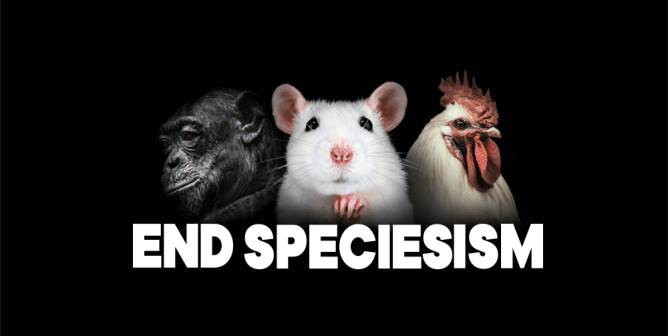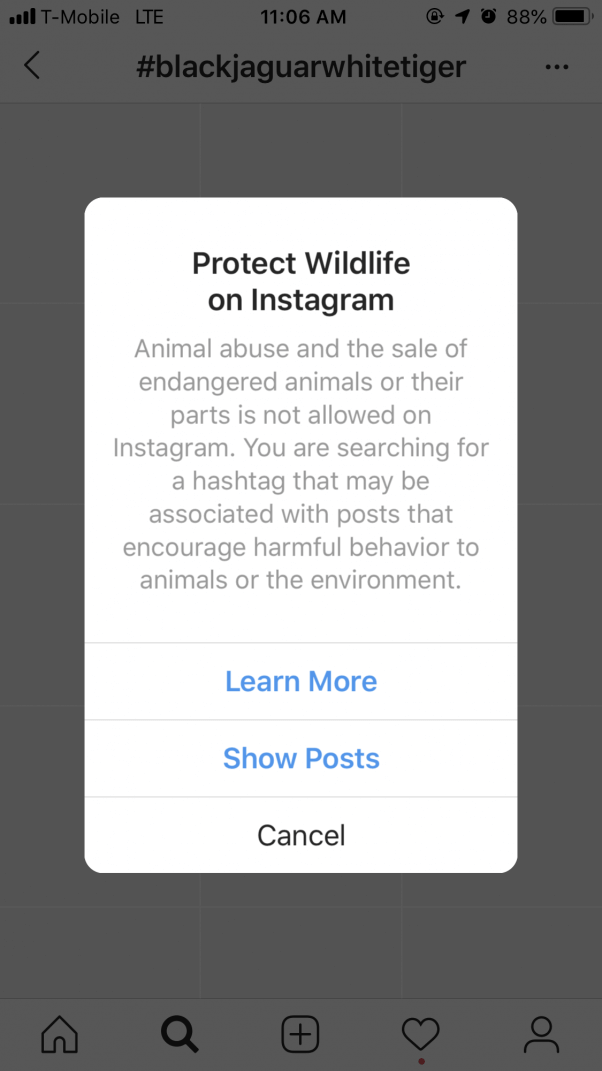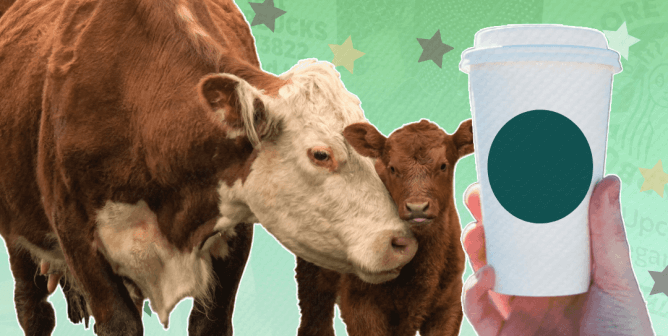Update (July 8, 2022): Another win against pseudo “sanctuaries”! Authorities reportedly seized 200 big cats and several other animals who were trapped at Mexico City’s sham animal “sanctuary,” Black Jaguar–White Tiger Foundation. This terrific news follows years of PETA’s efforts to raise alarm bells about the crummy tourist trap, where infant cubs were likely torn away from their mothers to be exploited for photo ops with visitors.
Videos allegedly depicting the miserable conditions at the facility also circulated online. Footage showed several emaciated cats with sores covering their skin and cats with mutilated tails—a strong indication that they were gnawing on their own tails out of anxiety.
Beware of Pseudo ‘Sanctuaries’
If a facility breeds or sells animals, forces them to take photos with humans, subjects them to “hands-on” interactions with visitors, or exploits them in any way—it’s not a sanctuary. Seedy roadside zoos often tack the word “sanctuary” or “rescue” onto their names, but the purpose of any legitimate animal sanctuary is to provide animals with safe, comfortable living conditions that give them as natural an existence as captivity allows. Steer clear of these cruel facilities, and only support true animal-rescue organizations.
Learn more about how to distinguish a true tiger sanctuary from a scam here.
Originally posted on March 27, 2019
Black Jaguar–White Tiger: Sham Sanctuary
Behind all the social media displays and rescue-themed hashtags, Black Jaguar–White Tiger “Foundation” in Mexico is just another sham sanctuary making a profit by exploiting animals.
As people turn their backs on roadside zoos and circuses, captive-animal exhibitors are getting creative and slapping comforting words such as “sanctuary,” “rescue,” and “foundation” onto their names. But no matter how they dress it up, the cruelty and exploitation are the same. Animals aren’t props–and tigers should never be used for Instagram photo ops or “tiger selfies.”
Here are nine great reasons to hit “unfollow” on Black Jaguar–White Tiger:
1. The animals weren’t really rescued.
Owner Eduardo Serio claims that the animals he takes in have been rescued. So how is it that he has a steady stream of babies always at the ready for infant-animal photo shoots? He says that he gets so many because breeding facilities exist in Mexico and that 80 percent of the time, a captive-bred mother rejects her litter of cubs. While it is true that the stress of captivity causes some mothers to reject their litters, animal experts agree that the rate is much lower. Even if Serio’s claim were true, breeding facilities exist to sell infant animals to exhibitors and those in the pet trade, not to lose money on entire high-dollar litters that they just successfully bred by giving them to sanctuaries for free.
He also claims to get cubs from people who adopted them as “pets.” But few people spend large sums of money on an exotic “pet” only to hand over the animal to someone else while he or she is still a baby. Most exotic animals are relinquished only when they grow too large to be handled by their buyers.
Serio says that some of the animals come from circuses. But Mexico banned the use of wild animals in circuses in 2014. And since infants are the easiest animals for circuses to train and they equal big bucks in ticket sales, it’s extremely unlikely that circuses outside the country are voluntarily handing over babies.
Serio isn’t being transparent about where all the cubs come from, but he’s likely breeding them himself and/or buying them from breeders.
2. Infant animals are likely being torn away from their mothers.
Baby animals are adorable, yes. But in order to be used for photos and videos, wild animals such as big cats are frequently torn from their mothers when they’re just days or even hours old in order to be get them acclimated to being handled and bottle-fed by humans. It’s a traumatic experience for the mother and the infant cubs—and detrimental to the cubs’ health. Tiger expert Dr. Ron Tilson explains:
“Big cat cubs are born blind, fragile and completely dependent on [their] mother’s care, warmth and milk to survive—in fact, in both wild tigers and captive tigers, neonatal mortality is highest (about 30%) during the first 30–90 days—which is why legitimate conservation propagation programs allow dams and their cubs to be left undisturbed after birth to allow the mother and offspring to bond and establish a feeding routine.”
3. Black Jaguar–White Tiger dismisses its critics as bitter women who’ve never had a real man give them attention.
In a now-deleted Instagram post, the founder writes,
“The real problem is that [these] bitter senior angry vegan feminists messed up their own lives when they had a chance to live them and now the only way to redeem themselves (According to them) is to become social justice warriors. Obviously, if a real man would pay attention to them, they’d drop their phones and focus on that testosterone in front of them, but that won’t happen.”
4. The babies don’t have their most basic needs met.
Cubs should be spending about 80 percent of their time sleeping, so subjecting them to a barrage of strangers, noise, and bright lights (including camera flashes) is stressful and unhealthy for them. They’re often kept in cardboard boxes, as shown in many of the facility’s social media photos and videos. And apparently, Serio, a man with no formal education in the care of big cats, doesn’t know how to bottle-feed the animals properly and helpers trained in doing so, either—as illustrated by this video released by Expose BJWT showing formula pouring out of a baby tiger’s nose.
It’s not uncommon for improperly fed cubs to drown or develop fatal pneumonia from aspiration of milk when inexperienced individuals attempt to hand-rear them. Feeding these infants formula also robs them of maternal milk, which is rich in antibodies and other nutrients that are essential to their health.
5. When the big cats grow up, they’re cast aside.
When the animals outgrow the cute baby stage and become too big and strong to be handled, they’re typically relegated to a lifetime behind bars and denied everything that’s natural and important to them. Serio admits that visitors have no interaction with the animals after they’ve outgrown the nursery because they “are super dangerous.”
6. Adults are crammed onto small dirt lots surrounded by chain-link fences.
The goal of a true sanctuary is to provide rescued animals who can no longer survive in nature with a habitat that replicates, as much as possible, the life that they would’ve had if left alone by humans. But at Black Jaguar–White Tiger, big cats are confined to dirt lots surrounded by chain-link fences. In the wild, these animals would have home ranges of up to hundreds of miles.
Serio has been boasting of upcoming expansions for years, but he’s been elusive about an actual plan for one, saying on the website only that it will be “the best place on Planet Earth ever created. A place where Magic and Silence will commune in such a way that it will create the biggest amount of Blue Energy ever. I’m not going to give a lot of detail yet because that’s not in my Nature, I just act and shock the world through my actions.”
7. Incompatible animals are forced to live together.
The founder of the facility brags about housing packs of animals together, but not all big cats are compatible. Jaguars are typically solitary animals who prefer to live and hunt alone in the wild, but at Black Jaguar–White Tiger, they’re forced to live in close quarters with lions and cheetahs. The facility has even allowed dogs in the same enclosures as big cats, despite admitting that the wild animals are dangerous.
8. At least one of the jaguars, Cielo, has apparently been declawed.
At facilities such as this one, big cats are sometimes declawed, a very serious and painful surgery that involves 10 separate, painful amputations of the last joint of each toe, including the bones, not just the nails. Videos from 2014 show Cielo (who has been at the facility since he was a baby) with claws, but videos made since indicate that he no longer has them.
9. Black Jaguar–White Tiger is not accredited by the Global Federation of Animal Sanctuaries.
The Global Federation of Animal Sanctuaries (GFAS) is the most trusted accrediting organization for sanctuaries, requiring members to observe a strict code of ethics and meet rigid animal-welfare standards. Its members have earned the highest level of credibility and are distinguished from pseudo-sanctuaries and substandard facilities. They never breed or sell animals, and they allow rescued animals to live out the rest of their lives in peaceful, spacious, natural habitats. Black Jaguar–White Tiger is not accredited by GFAS.
The Tide Is Turning Against Black Jaguar–White Tiger
Instagram now has warning messages about exploitation and animal abuse that pop up whenever someone searches for hashtags such as “#TigerSelfie” or “#BlackJaguarWhiteTiger.”
And Tinder is working hard to rid its platform of such photos, telling users to take down their “tiger selfies.”
Yet Black Jaguar–White Tiger still capitalizes on stars’ and influencers’ social media followings by inviting these people to visit the facility. Apparently, the only way a non-famous person can see it is by paying $3,500 to $7,000 for a “volunteer experience”—much of which seems to be spent just handling baby animals, judging by the description of it on the company’s website. By making Black Jaguar–White Tiger visits exclusive, expensive, and unattainable except by a select few, Serio has been able to drum up some misguided acclaim for his shabby roadside zoo.
A life lived in front of a camera and behind a chain-link fence, where babies are isolated and used as photo props, is the life of an exploited animal, not a rescued one. Hit “unfollow” on Black Jaguar–White Tiger and all animal abusers, and only support true animal-rescue organizations.







